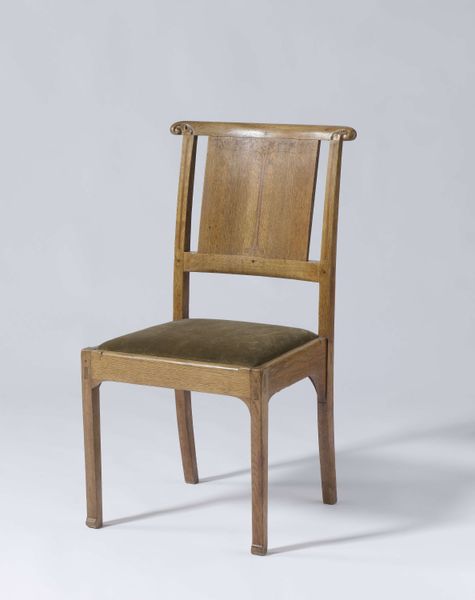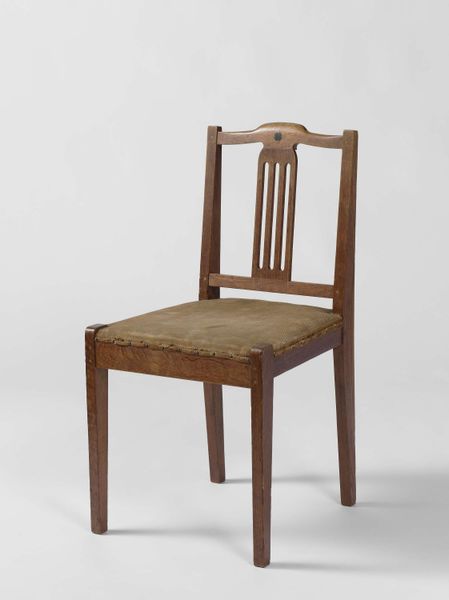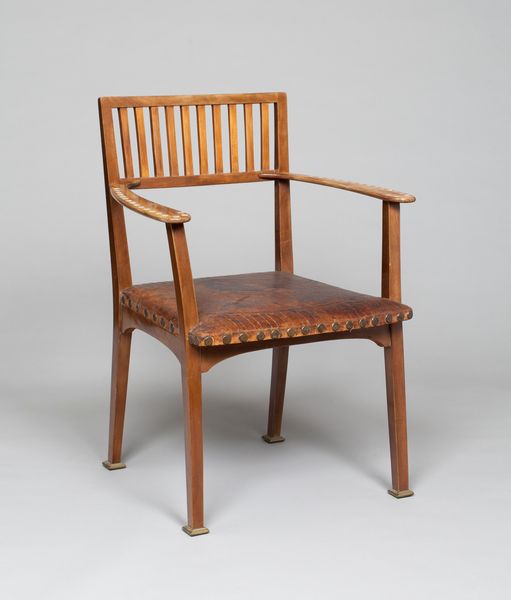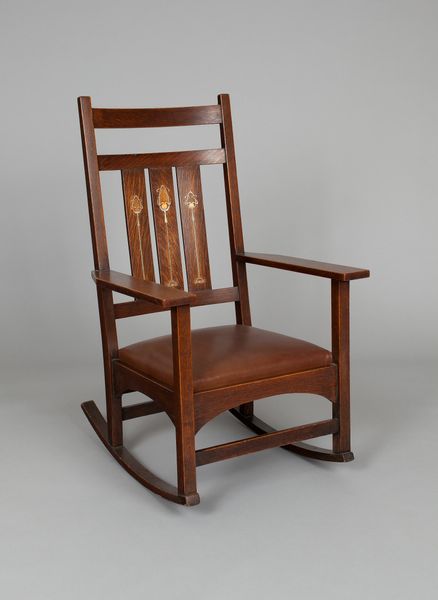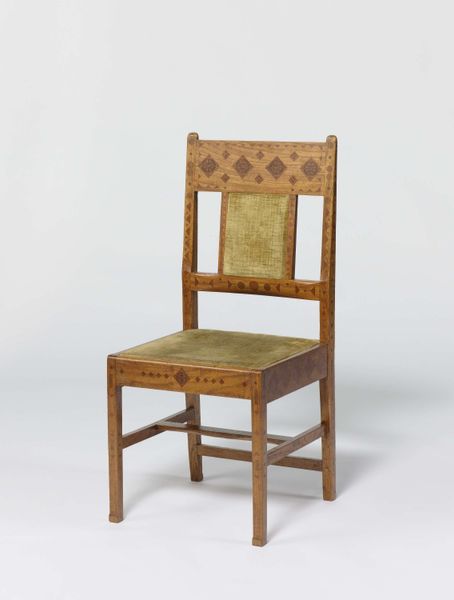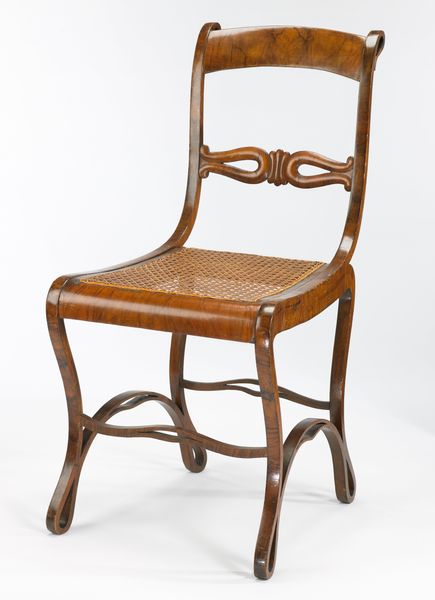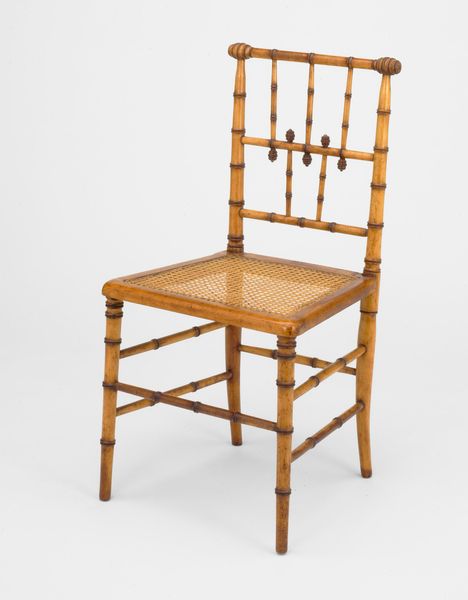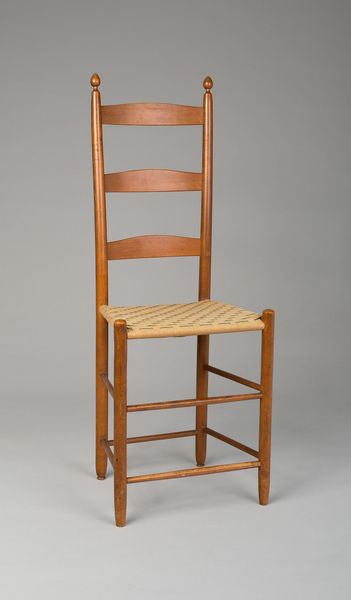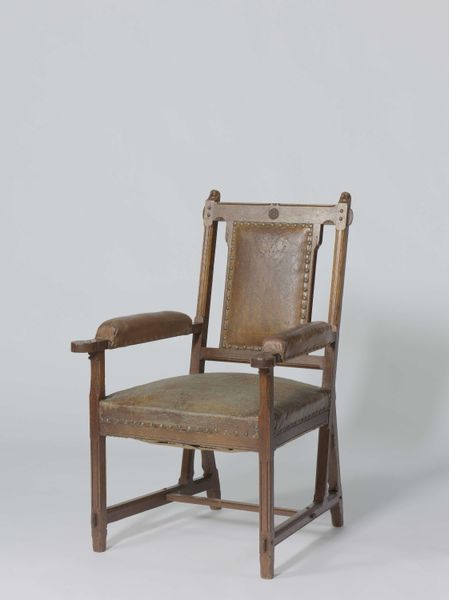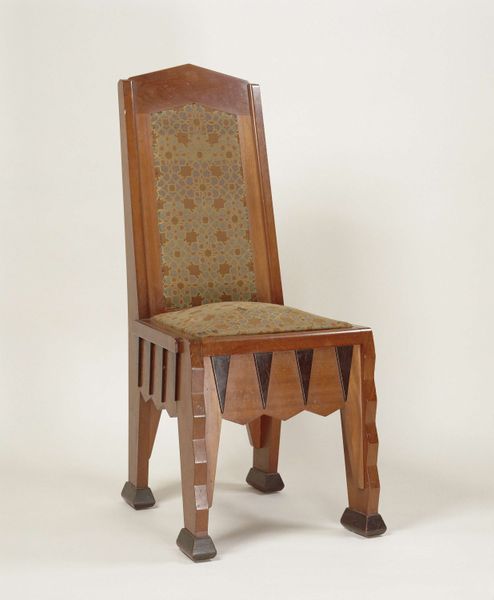
Armstoel met een gesneden gevlochten rozet en bekleed met rood/roze trijp c. 1894 - 1900
0:00
0:00
wood
#
portrait
#
arts-&-crafts-movement
#
furniture
#
wood
Dimensions: height 103.0 cm, width 61.5 cm, depth 65.0 cm, height 45.0 cm, weight 12.4 kg
Copyright: Rijks Museum: Open Domain
Curator: I'm completely drawn in by the geometric presence of this chair, a piece by Karel Petrus Cornelis de Bazel, crafted around 1894 to 1900. The title is quite descriptive, “Armchair with a carved braided rosette and upholstered with red/pink trimmings.” A lovely example of Arts and Crafts, really. Editor: You know, it’s funny, my immediate thought wasn’t about descriptions; it was more about... ritual. This chair gives me the feeling of a throne, but one used for quiet, introspective rituals. It demands uprightness. Curator: That’s an intriguing take. I do agree there is an implicit demand to its design; certainly a commitment to principles. I think the rosette at the top really accentuates this. So, tell me, how do you feel that single rosette inflects this object with significance? Editor: The rosette's a sun, or perhaps a stylized flower blooming outwards. Placed squarely, it grounds the chair in ideas of growth and centeredness. When I see it paired with this red, almost clotted seat—ideas about lifeblood emerge for me. Consider the historical use of wood in furniture: rooted in organic forms of living material, but deliberately shaped into functional shapes and abstracted beauty. I feel it in its lines, too, a blend of the earthy and divine. Curator: Absolutely. The contrast between the rosy, earthy comfort and those clean, upright lines you touched on hints at the Arts and Crafts movement’s deeper concerns with a return to honest labour. It is simple and beautifully utilitarian— but far from austere, wouldn’t you say? Editor: Not austere at all, no. More… self-aware. The wood, a honeyed color that only time can conjure, and the carving speaks of care and attention—not mere production. Curator: It brings forward how we place meaning onto ordinary things to achieve deeper states of reflection and comfort. Almost as though, a common daily interaction such as taking a seat and finding a peaceful moment were infused with importance by those subtle curves, careful carving, and comforting colours and form. Editor: Precisely. Objects like this become touchstones—charged with memories, emotions, histories. That chair isn’t just a place to sit; it’s a place to meet oneself.
Comments
No comments
Be the first to comment and join the conversation on the ultimate creative platform.
